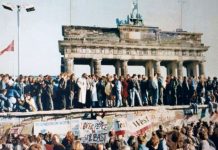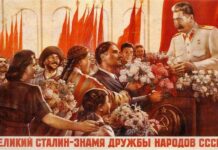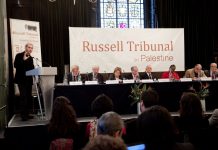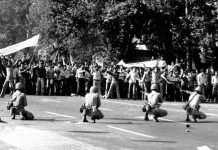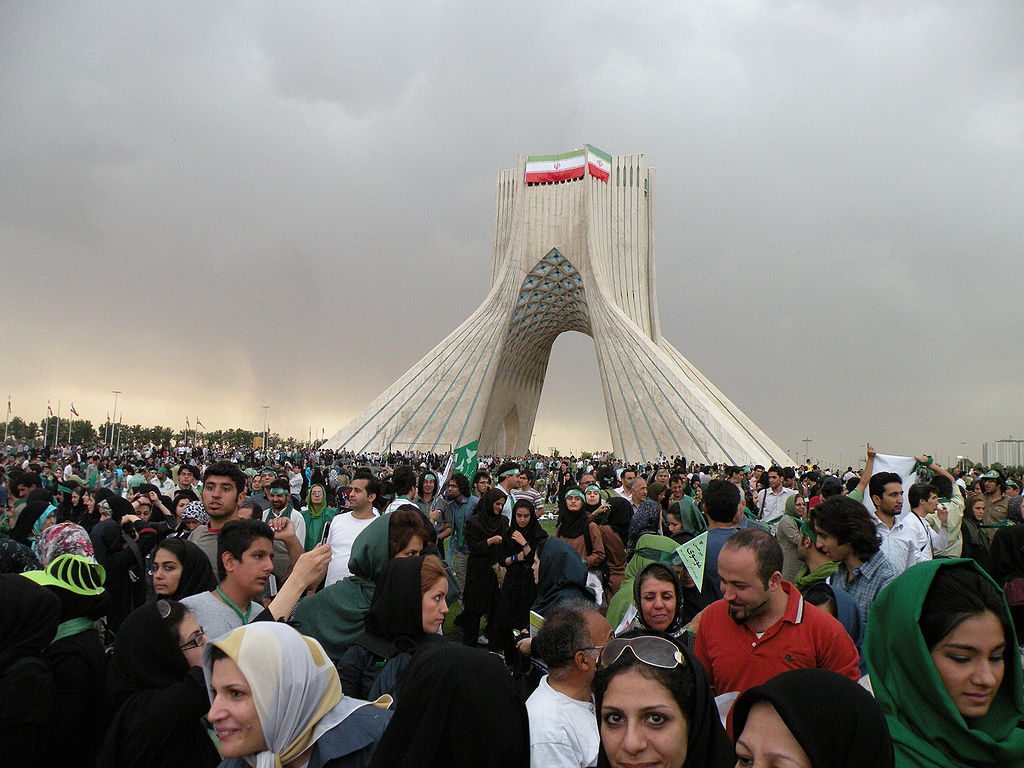
Linkbox om de iranske massedemonstrationer i juni 2009 i forbindelse med præsidentvalget og udviklingen siden, med baggrund + et udvalg af den internationale venstrefløjs analyser og debat.
Socialistisk Bibliotek/Tidsskriftcentret,
oktober 2009-.
Se også på Socialistisk Bibliotek:
Linkboxen Iran 1979, om den iranske revolution og kontrarevolution 1978-79.
Tidslinjen: 28. december 2017, om de iranske protester mod prisstigninger og korruption.
Leksika:
Wikipedia.org
- Timeline of the 2009 Iranian election protests
- 2009 Iranian election protests
- Iranian presidential election 2009
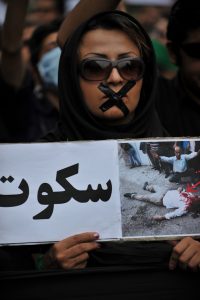
På dansk og svensk
Autonom Infoservice
Repression og revolte i Iran – en tidsindstillet bombe. Af Alfred Lang og Inger Hansen (18. februar 2010)
“Oppositionsbevægelsens mægtigste modstander er revolutionsgarden ‘Pasdaran’. Den udgør en ‘stat i staten’ og er en blanding af hær og milits, mafios virksomhedsmanagement og terroristnetværk.” Med link i bunden til flere artikler.
Kritisk Debat
Valget i Iran – og dansk kampagnejournalistik. Af Anders Lundkvist (september 2009; online på DBC Webarkiv)
“Det iranske præsidentvalg var interessant i sig selv. Det var også interessant, fordi dækningen i vestlige medier – ikke mindst de danske – siger meget om disse. Nemlig at de slår al kritisk sans fra i deres kampagne for at miskreditere et styre, der er kritisk overfor Vesten.”
Socialistisk Information
Diktaturets dilemma. Af Jaleh Tavakoli (19. august 2009)
“Midt i juni startede en historisk bølge af demonstrationer i milliontal i flere iranske storbyer. Protesterne startede som reaktion på valgsvindel, men udviklede sig til en bevægelse med radikale krav.”
Revolution
Artikler af Alan Woods:
- Iran: Revolutionen er begyndt (16. juni 2009)
- Mahmoud Ahmadinejads 18. brumaire (17. juni 2009)
- Den iranske revolution: hvor er den på vej hen? (18. juni 2009)
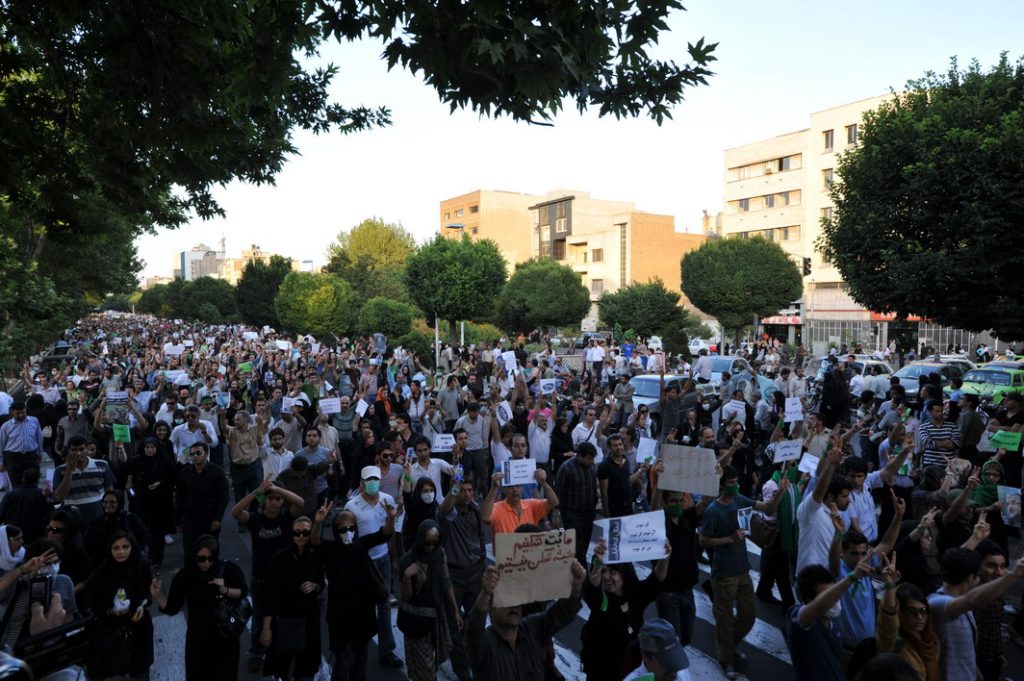
På engelsk
Amnesty International
Iran: Election contested, repression compounded (December 2009, 80 p.)
“This report examines the patterns of abuse before, during and since the June election, giving where possible details of individual cases and testimonies of victims who have spoken to Amnesty International and others.”
Campaign for Peace and Democracy
Question & answer on the Iran crisis. By Stephen R. Shalom, Thomas Harrison, Joanne Landy and Jesse Lemisch (July 7, 2009)
“Since the elections, some on the left, and others as well, have questioned the legitimacy of and the need for solidarity with the anti-Ahmadinejad movement. The Campaign’s position of solidarity with the Iranian protesters has not changed, but we think those questions need to be squarely addressed.”
See also: Related Materials, Announcements, and Links on Iran
Common Dreams
Iran and Leftist confusion. By Reese Erlich (June 29, 2009)
“The large majority of American people, particularly leftists and progressives, are sympathetic to the demonstrators in Iran … But a small and vocal number of progressives are questioning that view, including authors writing for Monthly Review online, Foreign Policy Journal, and prominent academics such as retired professor James Petras.”
Global Research
Iranian elections: The ‘Stolen Elections’ hoax. By James Petras (June 18, 2009; online at Kanaanonline.org)
“Neo-conservatives, libertarian conservatives and Trotskyites joined the Zionists in hailing the opposition protestors as the advance guard of a democratic revolution.”
In Defence of Marxism
Where is the Iranian revolution going? By Alan Woods (11 June 2010)
“Last year a powerful movement erupted in Iran that shook the hated Islamic fundamentalist regime to its very foundations. All the conditions were present for a successful revolutionary overthrow of the regime. What was lacking, however, was the active participation of the working class …”
Insurgent Notes
Anti-imperialism and the Iranian Revolution: Fetters of the past, potential for the future (Issue 4, August 2011)
“In order to better assess our situation today, we should perhaps go back to the Iranian Revolution of 1979 to better understand the limitations set at that time, in order to better assess our situation today. This question is not only pertinent to the left in Iran, but to the US left as well, in its relations to both the movement within Iran as well as to the uprisings sweeping the Middle East and North Africa.
International Socialism
Rupture and revolt in Iran. By Peyman Jafari (Issue 124, Autumn 2009, p.95-136)
“The protests and the government crackdown have prompted an animated debate on the international radical left … This article aims to put both developments in a historical perspective and provide an understanding of the opportunities and pitfalls facing the revolutionary left.
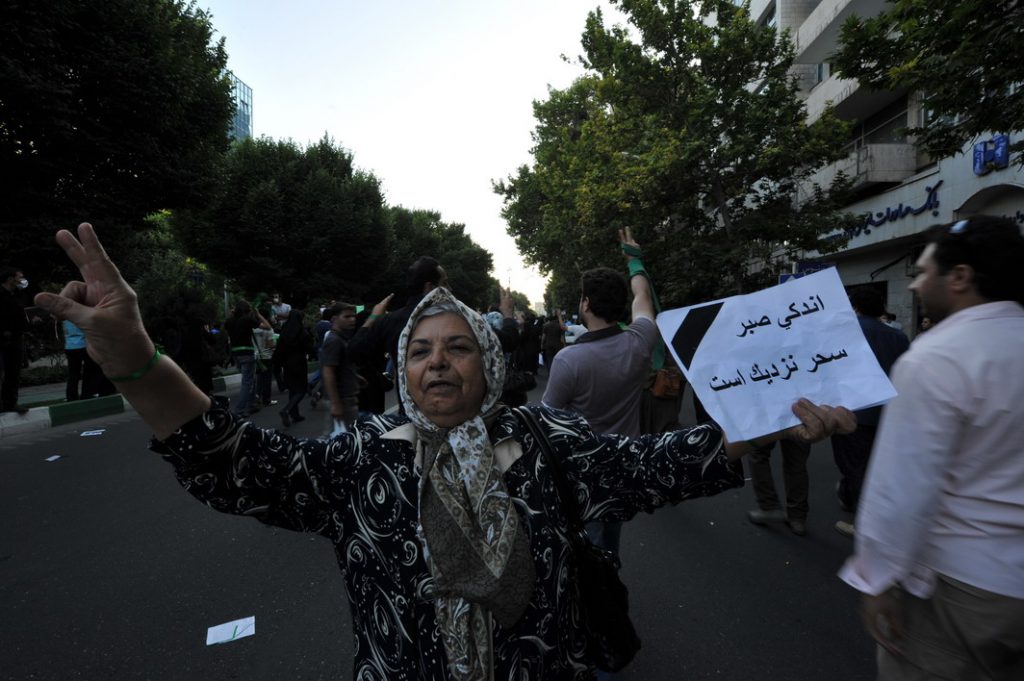
International Socialist Review
Which side are you on? By Phil Gasper (Issue 67, September-October 2009)
“Why are some U.S. leftists siding with the repressive Iranian regime against pro-democracy protesters?”
Iran: Rebellion and reaction. By Lee Sustar and Saman Sepehriwa (Issue 67, September-October 2009)
“The great mobilization that followed Iran’s disputed elections has transformed that country’s politics irrevocably. A blatant attempt to steal an election by incumbent president Mahmoud Ahmadinejad has turned into a coup, creating a profound split in the Iranian ruling class.”
International Viewpoint
Where is the Islamic Republic going?: Divisions at the top opened space for masses. By Houshang Sepehr (Issue 416, September 2009)
“What is happening in Iran is a spontaneous, ingenious and independent revolt by a people frustrated by thirty years of tyranny by an obscurantist, religious regime, a revolt that was unleashed by electoral fraud.”
The tragedy of the Left’s discourse on Iran: Žižek, Petras and others misunderstand the struggle. By Saeed Rahnema (Issue 414, July 2009)
“Disturbingly, like in the situations in Gaza or Lebanon, where Hamas and Hezbollah uncritically became champions of anti-imperialism, for some other people on the left, Ahmadinejad has become a champion because of his seemingly firm rhetoric against Israel and the US.”
Jacobin
How Iran’s theocrats allied with — and then crushed — the Left. By Liza Featherstone (October 24, 2022). “Sociologist Chahla Chafiq was a 25-year-old Marxist activist during the 1979 Iranian revolution. Now in exile in France, she looks back on the tensions between socialism, feminism, and anti-imperialism that have roiled Iran’s opposition politics for decades.”
Lenins Tomb
A question of solidarity. By Richard Seymour (June 22, 2009)
“With the protesters, or with the state? The charge of some on the left is that by backing the protesters, one is de facto drafted into the camp of the crooked neoliberals behind Mousavi’s campaign.”
Logos: A Journal of Modern Society & Culture
Behind the 2009 upheaval in Iran. By Kamran Afary and Kevin Anderson (Vol.8, No.2, 2009)
“All of the struggles of women, youth, and workers have a long history in Iran. Both the protestors and the regime are very aware of this. In this sense, the 2009 protests were a long time coming and will be very hard if not impossible to extinguish.”
Counter-Revolution and revolt in Iran: An interview with Iranian political scientist Hossein Bashiriyeh. By Danny Postel (Vol.8, No.2, 2009)
“Hossein Bashiriyeh is one of post-revolutionary Iran’s key political thinkers. Known as the father of political sociology in Iran, he has influenced, through his voluminous writings and his 24 years teaching political science at the University of Tehran (1983-2007)”.
Louis Proyect: The Unrepentant Marxist
The latest idiocy from Edward S. Herman and David Peterson (February 20, 2010)
“A typically long-winded piece (4500 words) by Edward S. Herman and David Peterson in defense of the Ahmadinejad government has just shown up on MRZine, the 24/7 website for Islamic Republic handouts.”
MRZine sinks to new lows (Juli 31, 2009)
“Apparently forced to deal with the almost unanimous opposition to Ahmadinejad by Iranian leftist intellectuals in the West as well as the obstreperous native Iranian commentators on its website, MRZine has printed a breathtakingly demagogic and stupid article by one Bizhan Pouya …”
Edward S. Herman and David Peterson: flunkies for Ahmadinejad (July 25, 2009)
“Over on MRZine you can read a 10,000-word attack by Edward S. Herman and his writing partner David Peterson directed at a statement on Iran made by the Campaign for Peace and Democracy. It is an application of a methodology that has by now become so familiar.”
MRZine and sex change operations in Iran (July 10, 2009)
“Despite aspiring to speak for the Iranian left, which in its view is reducible to Ahmadinejad and the forces that support him, MRZine has come under attack again and again by the Iranian left, both in exile and in Iran itself. The pro-Ahmadinejad tilt is mainly the contribution of the editor Yoshie Furuhashi …”
Middle East Report
The Green Movement awaits an invisible hand. By Mohammad Maljoo (June 26, 2010)
“Could the current year of the Persian calendar turn out not to double work but to halve it, as Iranian workers walk off the job in support of the last year’s political ferment?”
Tehran, June 2009. By Kaveh Ehsani, Arang Keshavarzian and Norma Claire Moruzzi (June 28, 2009)
“The conflict over the 2009 election has sent multiple, cross-cutting fracture lines both through the core of the regime and through Iranian society.”
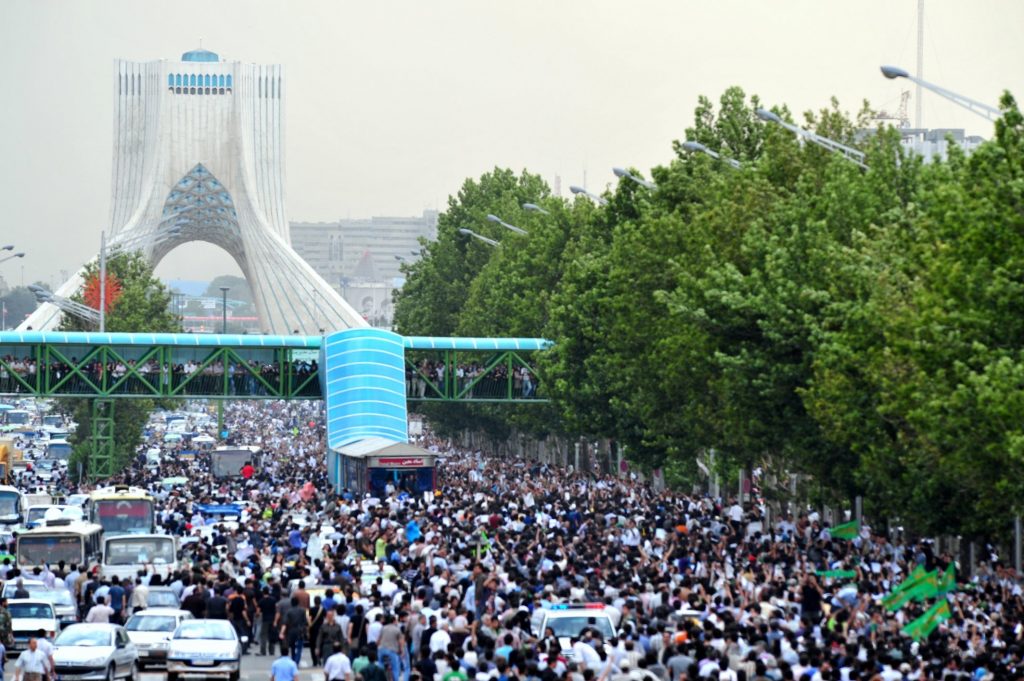
MR Online
Riding the Green Wave’ at the Campaign for Peace and Democracy and beyond. By Edward S. Herman and David Peterson (24 July 2009)
“By portraying the Islamic Republic as even more of an outlaw regime than it had been portrayed prior to June 12, doesn’t this intensive focus on discrediting the Iranian election feed nicely into the U.S.-Israeli destabilization and regime-change campaign?” See also: Reply to critics Edward Herman and David Peterson on Iran, by Stephen Shalom, Thomas Harrison, Joanne Landy, and Jesse Lemisch (Campaign for Peace and Democracy, August 2009)
An open letter to the Anti-War Movement: How should we react to the events in Iran? By Phil Wilayto (7 August 2009)
“Given all the contradictions, it’s not correct for non-Iranians to pick sides – particularly those of us who live in the very country that is both targeting the Iranian government and cheering on the anti-government movement.”
Iran: An alternative reading. By Azmi Bishara (26 June 2009)
“The official ideology that permeates institutions of government, the public sphere and the educational and other formative systems as the primary definer of identity and shaper of moral and ethical conduct is a real religion embraced by the vast majority of the people.”
New Politics
Revolutionary prefigurations: The Green Movement, critical solidarity, and the struggle for Iran’s future. By Danny Postel (No.49, Summer 2010)
“It is reform or revolution? Are we witnessing the metamorphosis of what began as a program of reform into something else, something more radical and ambitious?”
Iran: Reform and Revolution. By Yassamine Mather (No.49, Summer 2010)
“Iran is bracing itself for another turbulent year, and most observers believe the working class and youth will play a greater role in the coming protests.”
Green is the New Green: Social media and thepost-election crisis in Iran, 2009. By Negar Mottahedeh (No.49, Summer 2010)
“The Persian language blogosphere is rich, varied, and dynamic. Of the 100 million blogs registered around the world in 2005, 700,000 were Persian language, either inside Iran or in the diaspora.”
Perpolis 2.0
Iran’s Post-Election Uprising. Edited by Payman and Sina (June 25th, 2009, 10 p.; online at Internet Archive). Inspired by the original grahic novel by Marjane Satrapis.
Socialist Review
Making a stand with Iran’s Green Movement (Issue 359, June 2011)
“In 2009 a mass movement was born in the streets of Iran, mobilising millions in opposition to the disputed re-election of President Ahmadinejad. Jack Farmer and Peyman Jafari spoke to author Hamid Dabashi about being an opponent of both the Iranian regime and Western imperialism.”
Iran – a fight on two fronts. By Dominic Kouros (Issue 344, February 2010)
“In July last year thousands of ordinary Iranians took to the streets to demonstrate against tyranny and repression. Now, as the West seeks to impose sanctions, Dominic Kouros argues that the democracy movement is still a potent force capable of leading a struggle for genuine liberation.”
Solidarity and encouragement. By Chris Harman (Issue 339, September 2009; Online at Marxists Internet Archive)
“There can be no guarantee as to which forces will win out in Tehran. But those on the left who were hostile to the huge protests are in danger of lining up with those who want to crush the movement.”
Iran’s new rebellion. By Peyman Jafari (Issue 338, July 2009; online at Internet Archive)
“The election and its aftermath have shown that the divisions inside Iran’s ruling elite have become unmanageable and will lead to new and bigger political crises in the near future.”
![Protest demonstration against election results, 7th Tir thru Karimkhan to Vali Asr Sq. and beyond, Tehran. banner reads: "We are not rioters. We are not hooligans. We are not twigs and splinters. We are the people, and we have not gathered here to riot, even though youve treated us like rioters, beating and killing our brothers and sisters in their own blood. Would you dare do the same if it were your own brothers and sisters? Is this the absolute freedom[1] you talk of?" Twigs and splinters refers to what Ahmadinejad called the defeated Mousavi supporters in mockery. Author: Saba. Public Domain. Source: <a href="https://commons.wikimedia.org/wiki/File:Tazahorat_sabz_(27).JPG">Wikimedia Commons</a>](https://socbib.dk/wp-content/uploads/2009/10/1280px-Tazahorat_sabz_27-1024x768.jpg)
Socialist Worker
Why does the West fear and loath Iran? (19 April 2024)
“Thomas Foster answers six vital questions about what kind of society is Iran—and why Israel and the West want to destroy it.”
Iran repression: a regime in crisis. By Simon Assaf (Issue 2157, 27 June 2009)
“Iran is in the grip of a popular rebellion, the like of which has not been seen since the 1979 revolution.” Med links til 6 andre artikler.
SocialistWorker.org
A new phase in Iran’s struggle (January 6, 2010)
“Lee Sustar looks at the impact of Iran’s recent protests and street battles.”
Revolt in Iran: Which side are you on? (Issue 703, August 12, 2009)
“Lee Sustar looks at the arguments of Ahmadinejad’s apologists on the left.”
The left’s confusion on Iran (July 15, 2009)
“Saeed Rahnema, a professor at York University in Canada, argues that some parts of the left are turning reality on its head in their analysis of the uprising in Iran.”
The roots of Iran’s revolt (Issue 700, July 1, 2009)
“Lee Sustar sets out 30 years of background to the mass demonstrations that shook Iran after the June 12 election.”
Socialistworld.net
Iran: The movement one year after the rigged elections. By Kristofer Lundberg (12 June 2010)
“12 June marks the first anniversary of the mass revolt that shook the Islamic Republic of Iran; a people’s revolt against the regime.”
Weekly Worker
Three waves of protest (Issue 1333, 4 February 2021). Supplement: “Feelings of injustice, a lack of rights and a sense of betrayal have become universal and act as psychological and subjective drivers of protest, writes Ardeshir Mehrdad. But how can protest be forged into a movement than can topple the regime?”
‘Islamic feminism’ and women’s emancipation (Issue 856, March 10, 2011)
“Yassamine Mather examines the reality of the continuing struggle against the regime’s oppression.”
‘Reformists’ exposed on first anniversary (Issue 822, June 17, 2010)
“As imperialist sanctions are stepped up, leaders of Iran’s ‘opposition’ are in headlong retreat. Yassamine Mather reports on the anniversary of the 2009 rigged elections.”
Regime’s most persistent opposition (Issue 793, November 12, 2009)
“Ali Pichgah is a veteran of the Iranian oil strikes of 1979-81, when he was a representative of the Tehran refinery workers shora (council) on the National Shora of Oil Workers. He spoke to Yassamine Mather about the current situation in Iran.”
Green road to nowhere (Issue 790, October 22, 2009)
“The sham presidential election of June 2009 has unleashed a rainbow of political forces, writes Yassamine Mather, including an increasingly strong red component.”
The Iranian coup four months on (Issue 789, October 15, 2009)
“Mehdi Kia examines the state of the movement against the clerical regime.”
Out of step with the masses (Issue 780, July 30, 2009)
“With the crisis-ridden Islamic regime wracked by divisions, what is the state of Iran’s opposition? Yassamine Mather surveys the sorry scene.”
Origins of political islam (1) (Issue 720, May 8, 2008)
“Yassamine Mather begins a series of articles on the islamic republic of Iran.”
Donkey economics and islamic martyrdom (2) (Issue 722, May 22, 2008)
“Continuing her examination of Iran and the islamic regime, Yassamine Mather looks at the theocracy’s political economy.”
Communists for the imam’s line (3) (Issue 726, June 19, 2008)
“Yassamine Mather continues her discussion of political islam. In this article she describes how the left’s illusions in Tehran’s ‘anti-imperialist’ foreign policies played into the hands of enemies of the working class.”
No friends of women (4) (Issue 727, June 26, 2008)
“Yassamine Mather continues her discussion of political islam by examining the women’s movement in Iran, its achievements and contradictions.”
Sanctions hit workers, not theocratic regime (5) (Issue 729, July 10, 2008)
“Yassamine Mather reviews the effect of US and UN moves against Tehran.”
Z Magazine
A look at the Labor movement in Iran. By Faramarz Dadvar (Vol.22, No. 9, September 2009)
“In the recent demonstrations against the presidential election in June and July 2009, organized labor solidly supported the people’s demands for free elections, civil liberties, political democracy, and economic justice.”
















